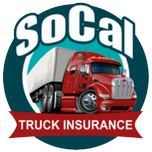
Ways to Lower Your Commercial Truck Insurance Cost – Save Money Effectively
In the California trucking industry, where profit margins can be thin, managing operational costs is crucial for success. One significant expense that can impact your bottom line is the cost of commercial truck insurance.
While insurance is an essential investment for protecting your business, there are effective strategies to lower these costs without sacrificing the quality of your coverage. Here’s how you can save money on commercial truck insurance.
Strategies to Lower The Cost of Trucking Insurance
Lowering commercial truck insurance costs can significantly benefit businesses in the transportation industry. By implementing some strategies, trucking businesses in California can effectively lower the cost of their insurance while still maintaining adequate coverage to protect their assets and operations. Here are some strategies to consider.
1. Focus on Safety
Implementing a robust safety programA structured plan implemented by an employer to prevent accidents and promote safety in the workplac... is one of the most effective ways to reduce the cost of trucking insurance. Insurance providers often offer discountsReductions in insurance premiums offered by insurers to policyholders who meet certain criteria that... to businesses that demonstrate a commitment to safety through:
- Driver TrainingPrograms designed to educate and improve the skills of drivers, focusing on safe driving techniques,... Programs: Regularly training your drivers in safe driving practices can significantly reduce the risk of accidents.
- Vehicle MaintenanceRegular and necessary upkeep required to ensure the safe and efficient operation of a truck, typical...: Keeping your trucks in top condition minimizes the chance of breakdowns and accidents related to vehicle failure.
- Safety Equipment: Investing in advanced safety technologies for your commercial vehicles, such as collision avoidance systems, dash cams, and electronic logging devices (ELDs), can also lower insurance premiums.
2. Hire Experienced Drivers
The experience and driving records of your drivers play a crucial role in determining your insurance rates. Hiring experienced truck drivers with clean driving records and several years of commercial driving experience can lead to lower insurance costs. Conduct thorough background checks and consider implementing a probationary period to assess new drivers’ skills and safety practices.
3. Increase DeductiblesA specified amount of money that the insured must pay before an insurance company will pay a claim.
Opting for a higher deductible can reduce your premiumThe amount paid by the insured to the insurance company in exchange for insurance coverage, typicall... costs. This means you’ll pay more out of pocket in the event of a claimA formal request by a policyholder to an insurance company for coverage or compensation for a covere..., but the overall savings on premiums can be significant over time. Ensure your business can comfortably afford the higher deductible before making this change.
4. Shop Around and Compare Quotes
Insurance rates can vary widely between providers. It’s essential to shop around and get quotes from multiple insurance companies. Look for insurers that specialize in commercial trucking insurance, as they may offer better rates and coverage options suited to your specific needs.
5. Bundle Policies
If you require multiple types of insurance coverage, consider bundling them with the same provider. Many insurance companies offer discounts for businesses that hold several policies with them. This can include liabilityA financial obligation or debt owed by an individual or business to another entity, typically result..., cargo insuranceInsurance that covers loss or damage to freight during transit, which is critical for motor carriers..., physical damage, and property damageInsurance coverage that pertains to damage or destruction of buildings, vehicles, and other physical... insurance, among others.
6. Regularly Review Your Coverage
Your insurance needs may change as your business grows or evolves. Regularly reviewing your policies can ensure you’re not overpaying for coverage you no longer need. It’s also an opportunity to adjust your coverage based on new assets, routes, or types of cargo.
7. LeverageThe use of borrowed capital to increase the potential return of an investment, which also increases ... TelematicsTechnology used to monitor vehicle movement, speed, and driver behavior, increasingly used by insure... Data
Modern telematics systems can track driving behaviors, vehicle usage, and maintenance needs. Sharing this data with your insurance provider can demonstrate your proactive approach to monitoring and improving safety. Some insurers may offer discounts based on positive telematics data.
8. Establish a Formal Risk ManagementThe process of identifying, assessing, and controlling threats to an organization's capital and earn... Program
A comprehensive risk management program that identifies, assesses, and mitigates risks can make your business more attractive to insurers. This can include everything from driver health and wellness programs to security measures for preventing cargo theftInsurance claims related to the theft of goods from a vehicle or transport container, covering the l....
9. Review Payment Plans and Discounts
Insurance companies often provide various payment plans and discounts that can help lower the overall cost. Some insurers offer a reduced rate for paying your premium in full upfront rather than in monthly installments. Additionally, inquire about any available discounts for which your business may qualify, such as those for being claim-free for a certain period, using electronic logging devices (ELDs), or enrolling in direct billing. These discounts can accumulate to offer significant savings over time.
10. Optimize Insurance Limits and Coverage
While it’s crucial to have adequate coverage, over-insuring can lead to unnecessarily high premiums. Work with your insurance provider to analyze your business’s specific risk exposureThe extent to which the truck is at risk of encountering an insurable incident while not under dispa... and tailor your coverage limits accordingly.
For example, if you operate in areas with a lower risk of theft or natural disasters, you might not need the highest level of coverage for certain perils. It’s a delicate balance between being protected and overpaying, and a knowledgeable insurance agent can help you navigate these decisions.
11. Maintain Accurate and Detailed Records
Keeping detailed records of your operations, including driver training, vehicle maintenance, and safety complianceAdherence to safety regulations that can minimize accidents and injuries, impacting liability insura..., can serve as evidence of your commitment to minimizing risk. Presenting these records to your insurance provider can support your case for lower premiums. Accurate documentation of your fleet’s value, the cargo you transport, and your operational practices helps ensure that you’re only paying for the coverage you truly need.
12. Explore Alternative Risk FinancingThe process of identifying and obtaining funds to cover the costs of risk, including retained losses... Options
For larger fleets, alternative risk financing options such as captive insurance or self-insuranceA risk management strategy where the entity assumes the financial risk of loss instead of transferri... might offer a way to reduce costs. These options involve setting aside funds to directly cover potential losses rather than paying premiums to an insurer. While this approach requires significant financial planning and risk assessmentThe process of identifying potential risks in advance, analyzing them, and taking precautionary step..., it can offer substantial savings for businesses with a strong safety record and financial reserves.
13. Foster a Partnership with Your Insurance Provider
View your relationship with your insurance carrierThe entity that physically transports the freight from one location to another, hired by a freight b... as a partnership rather than a transaction. Open communication about your business’s evolving needs, challenges, and successes can lead to more tailored advice and adjustments to your policy that reflect your current risk profile. An insurer who understands the nuances of your operation is better equipped to offer coverage solutions that align with your strategic goals.
Lowering the cost of commercial truck insurance requires a combination of strategic planning, proactive risk management, and informed decision-making. By implementing these tips, you can achieve significant savings on your insurance premiums, enhancing your business’s profitability and long-term viability.
Lower Your Insurance Costs with Expert Guidance from SoCal Truck Insurance
Navigating the complexities of commercial truck insurance can be challenging, but you don’t have to do it alone. SoCal Truck Insurance specializes in providing customized insurance solutions that meet the unique needs of your trucking business in California. With our expertise, we can help you identify ways to save on your insurance costs without compromising the quality of your coverage.
Ready to reduce the cost of your commercial truck insurance? Contact SoCal Truck Insurance today to obtain a free trucking insurance quote, and let us help you find the perfect balance between protection and affordability.


